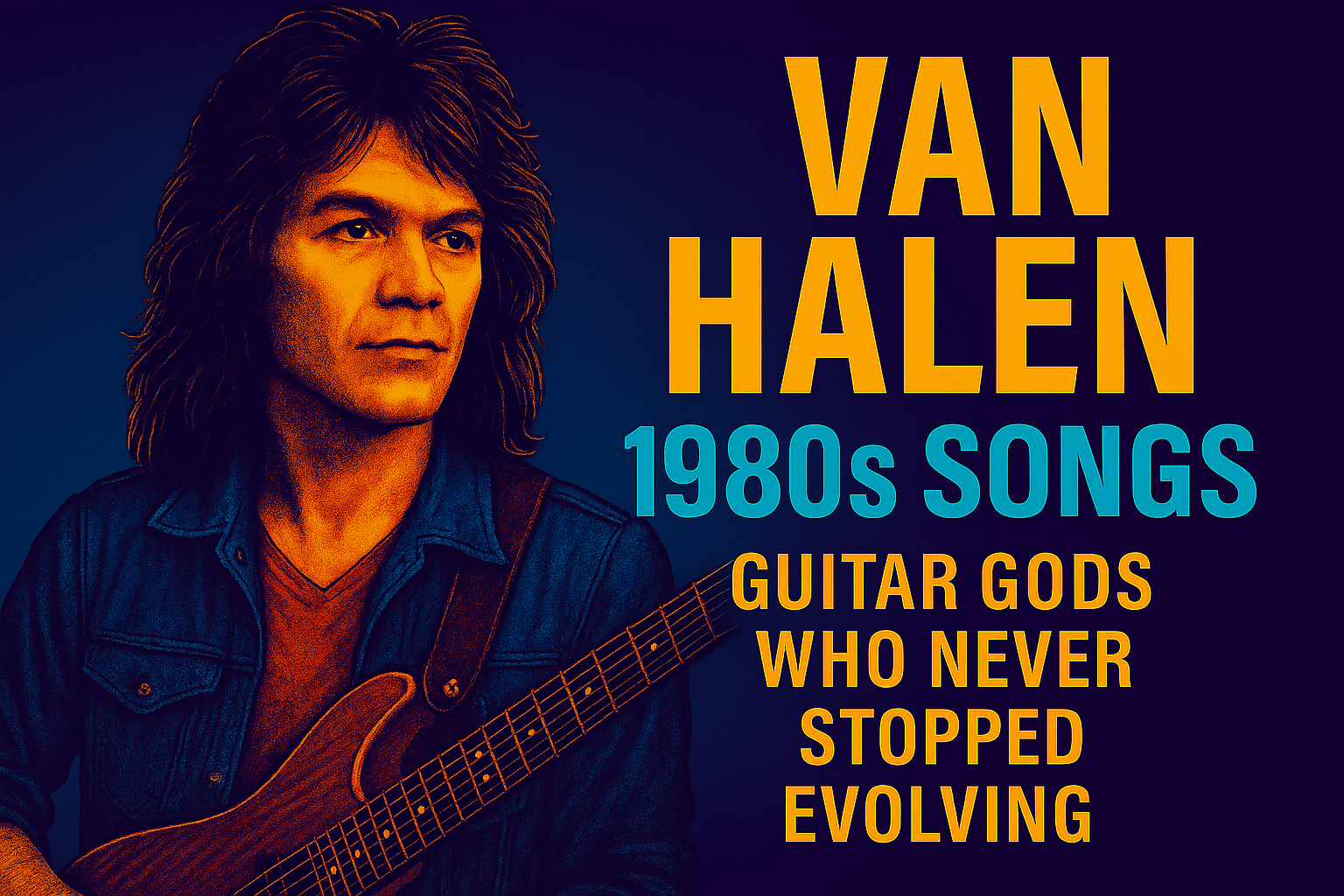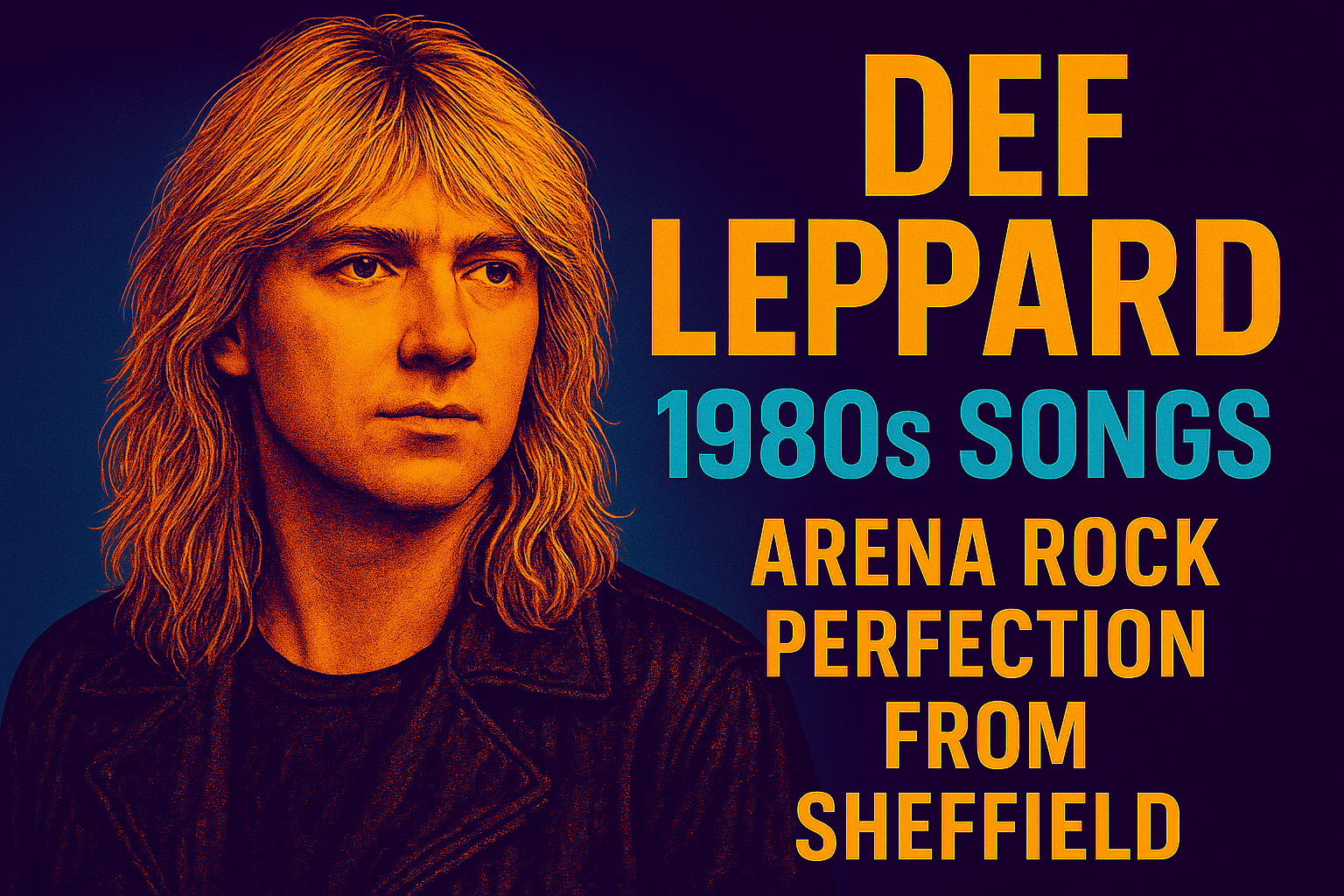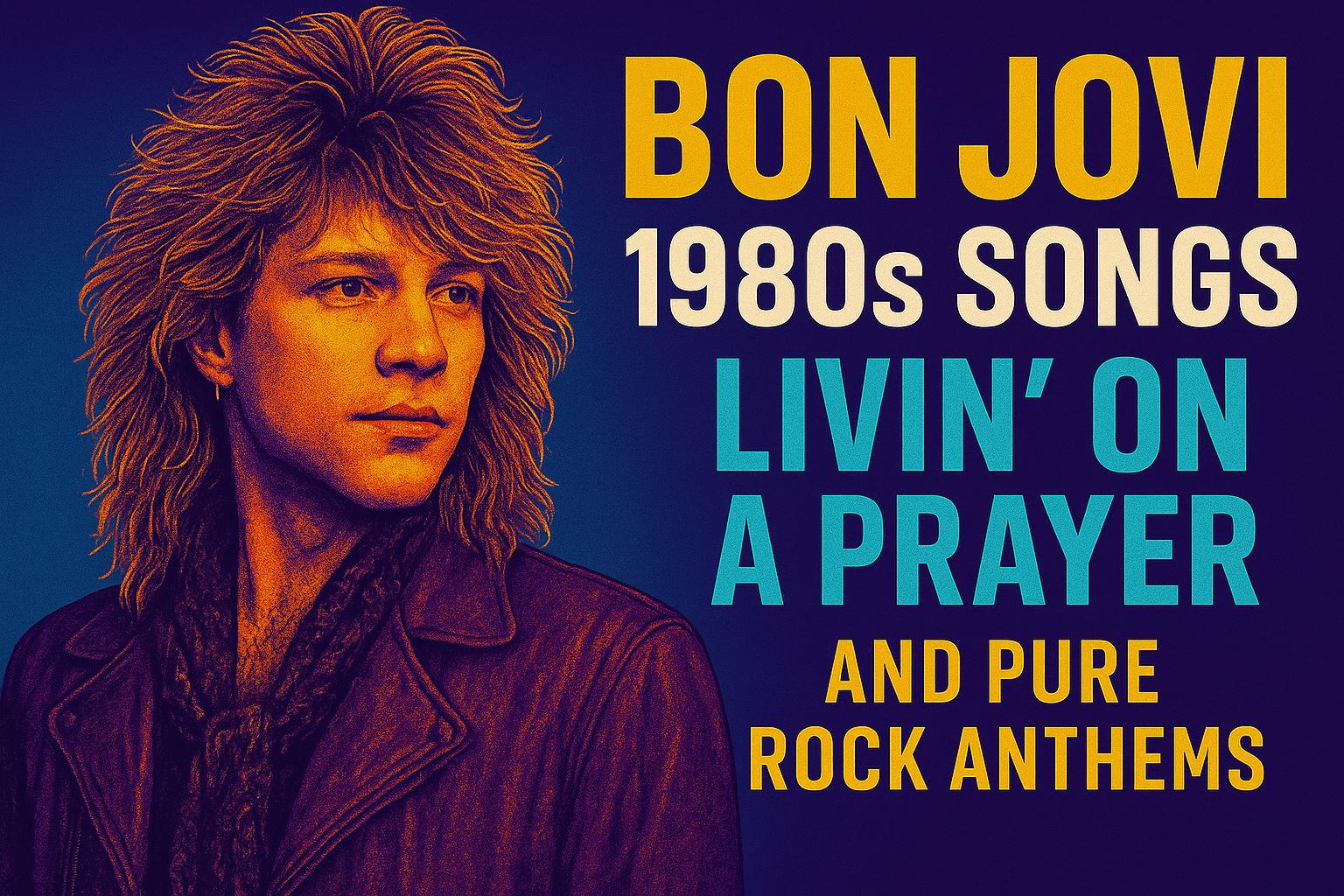Picture this: it’s 1984, you’re flipping through MTV, and suddenly Eddie Van Halen appears on your screen. He’s not playing guitar – he’s playing synthesizer on “Jump” while David Lee Roth bounces around like a man possessed. This wasn’t just surprising; it was revolutionary. Here was the greatest guitarist of his generation proving that innovation meant never standing still.
If you’re searching for the definitive Van Halen 1980s songs that showcase their incredible evolution and guitar mastery, you’ve struck pure gold. These Van Halen 1980s songs didn’t just dominate MTV and rock radio. They redefined what a rock band could be when technical virtuosity met irresistible pop sensibility. From synthesizer experiments to face-melting solos, Van Halen proved that the best musicians never stop pushing boundaries.
As someone who witnessed Van Halen’s incredible journey through the ’80s, I can tell you their success wasn’t just about Eddie’s guitar wizardry. Van Halen created music that was simultaneously sophisticated and completely accessible. They made technical excellence sound effortless and fun.
1. Jump – Van Halen (1984)
The song that proved guitar gods could embrace synthesizers without losing their rock soul. “Jump” was pure joy wrapped in Eddie’s keyboard mastery and David Lee Roth’s irrepressible energy. The track showed that innovation could enhance rather than replace guitar power.
Eddie’s synth work was as innovative as his guitar playing. The song’s celebration of taking chances over infectious hooks became an anthem for anyone ready to leap. They made change sound absolutely irresistible.
2. And the Cradle Will Rock – Van Halen (1980)
Eddie’s guitar orchestration created a wall of sound that was both heavy and incredibly sophisticated. “And the Cradle Will Rock” was power chords elevated to art form. The song showcased Eddie’s ability to make simple concepts sound revolutionary.
The track’s driving energy and memorable hooks proved that technical mastery could serve great songwriting. Van Halen made complexity sound completely natural and effortless.
3. Unchained – Van Halen (1981)
Pure Van Halen swagger delivered with their trademark blend of power and precision. “Unchained” was freedom made audible. Eddie’s guitar work and David Lee Roth’s charismatic vocals created something that was both rebellious and incredibly catchy.
The song’s celebration of breaking free over driving rhythms became an anthem for independence. They made rebellion sound like the most natural thing in the world.
4. Pretty Woman – Van Halen (1982)
Van Halen’s transformation of Roy Orbison’s classic into a hard rock masterpiece was pure genius. “Pretty Woman” showed their ability to honor tradition while making it completely their own. Eddie’s guitar work turned gentle romance into driving rock celebration.
The track proved that great songs could be reinterpreted for new generations without losing their essential appeal. Van Halen made reverence sound revolutionary.
5. Panama – Van Halen (1984)
The ultimate driving anthem that made every car feel like a race car. “Panama” was pure adrenaline delivered through Eddie’s innovative guitar work and the band’s tight rhythm section. The song’s energy was absolutely infectious.
The track’s celebration of speed and freedom over crushing riffs became a staple of rock radio. Van Halen made the open road sound like the ultimate destination.
6. Hot for Teacher – Van Halen (1984)
Van Halen’s most provocative anthem was delivered with such humor and musical sophistication that it became irresistible. “Hot for Teacher” combined adolescent fantasy with adult musical execution. Alex Van Halen’s drumming was absolutely thunderous.
The song’s cheeky subject matter over complex arrangements showed Van Halen’s ability to be both playful and serious. They made forbidden desire sound like pure fun.
7. I’ll Wait – Van Halen (1984)
Eddie’s synthesizer work reached new heights of sophistication on this atmospheric rocker. “I’ll Wait” showed Van Halen could create texture and mood while maintaining their essential rock power. The song proved that evolution could enhance rather than diminish their impact.
The track’s blend of electronic elements with guitar mastery created something uniquely Van Halen. They made the future sound like the perfect place to rock.
8. Why Can’t This Be Love – Van Halen (1986)
Sammy Hagar’s debut with Van Halen proved that the band could evolve while maintaining their essential power. “Why Can’t This Be Love” was sophisticated pop-rock that showcased everyone’s musical growth. The chemistry between Hagar and Eddie was immediately apparent.
The song’s exploration of romantic uncertainty over polished arrangements showed Van Halen’s continued evolution. They made change sound like the most natural progression in the world.
9. Dreams – Van Halen (1986)
Van Halen’s most anthemic statement with Sammy Hagar was both inspirational and incredibly catchy. “Dreams” celebrated aspiration and achievement over some of Eddie’s most memorable guitar work. The song proved that lineup changes could create new energy.
The track’s message about pursuing your dreams over driving rhythms became an anthem for anyone with big ambitions. Van Halen made hope sound absolutely unstoppable.
The Guitar Revolution That Never Stopped
These Van Halen 1980s songs represent the work of musicians who refused to be limited by expectations or genres. Van Halen proved that technical virtuosity and commercial appeal weren’t mutually exclusive. They showed that the best rock music often comes from pushing boundaries while respecting traditions.
What made Van Halen’s ’80s work so influential was their complete commitment to innovation. While other bands relied on formulas, Van Halen constantly experimented with new sounds and approaches. Eddie’s willingness to embrace synthesizers showed that great musicians never stop learning.
Their production evolution throughout the decade showed a band unafraid to grow and change. From the raw power of their early ’80s work to the polished sophistication of their later material, Van Halen proved that evolution could enhance rather than diminish their essential impact.
Technical Mastery Meets Pop Sensibility
Eddie Van Halen’s influence on rock guitar cannot be overstated. His techniques became the foundation for countless guitarists who followed. But what made Eddie special wasn’t just his technical ability – it was his understanding of how to serve songs.
His innovation extended beyond guitar playing to include synthesizer work, production techniques, and songwriting approaches. Eddie showed that true mastery meant being able to contribute to music in multiple ways while maintaining a distinctive voice.
The Van Hagar Evolution
The transition from David Lee Roth to Sammy Hagar could have ended Van Halen’s career. Instead, it proved that great bands could evolve and find new creative energy. The Hagar era showed different aspects of Van Halen’s musical personality while maintaining their essential power.
Both eras of Van Halen contributed essential songs to their ’80s catalog. The diversity of their output during this decade proved that great rock music could come from multiple approaches and personalities.
Lasting Innovation
These Van Halen 1980s songs continue to influence new generations of musicians who understand that innovation and tradition can coexist beautifully. They prove that the best rock music often comes from the tension between respecting the past and pushing toward the future.
From guitar schools to rock radio, Van Halen’s ’80s catalog continues to provide the soundtrack for anyone who believes that technical excellence and pure fun can coexist. Their music reminds us that the best rock and roll makes you want to learn, grow, and rock harder than you ever thought possible.
Which Van Halen innovation still blows your mind? Share your favorite moment of guitar mastery in the comments below. If this tribute brought back some serious rock memories, crank it up and share it with your fellow believers in the power of musical evolution!



